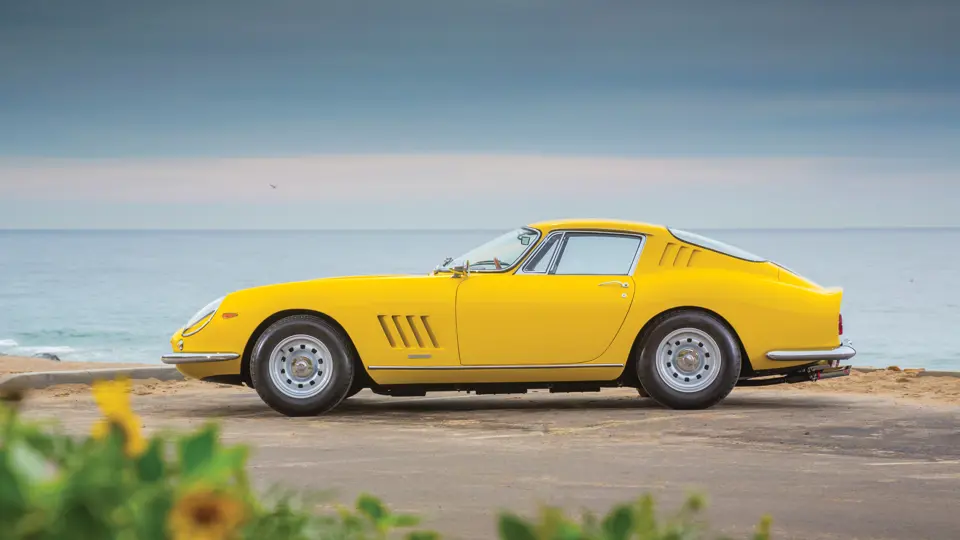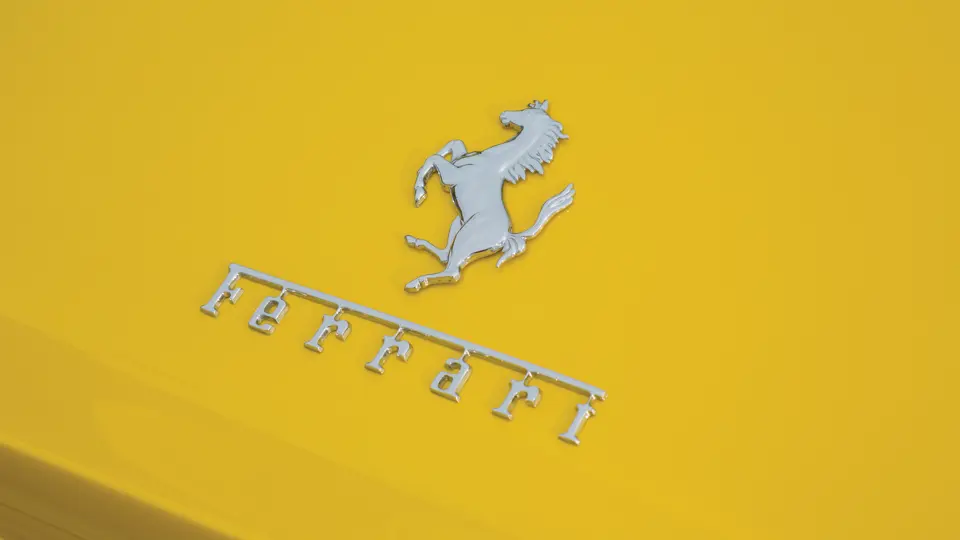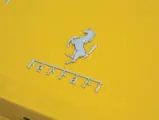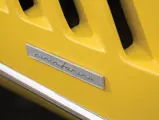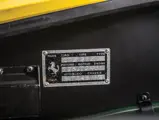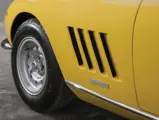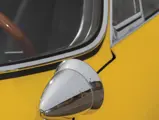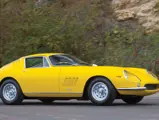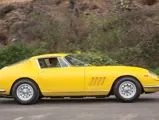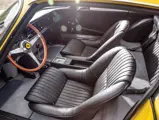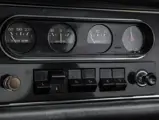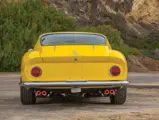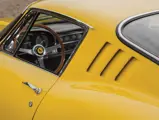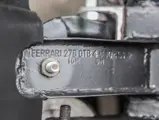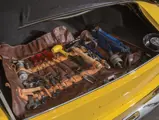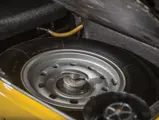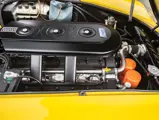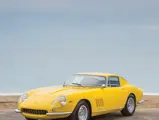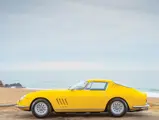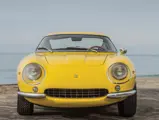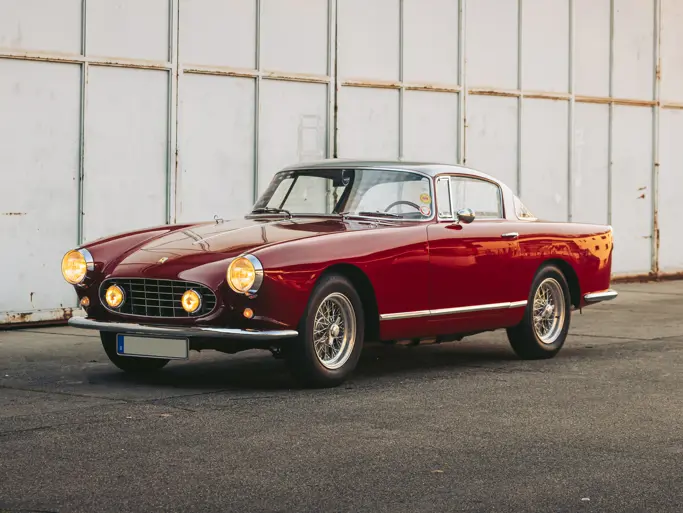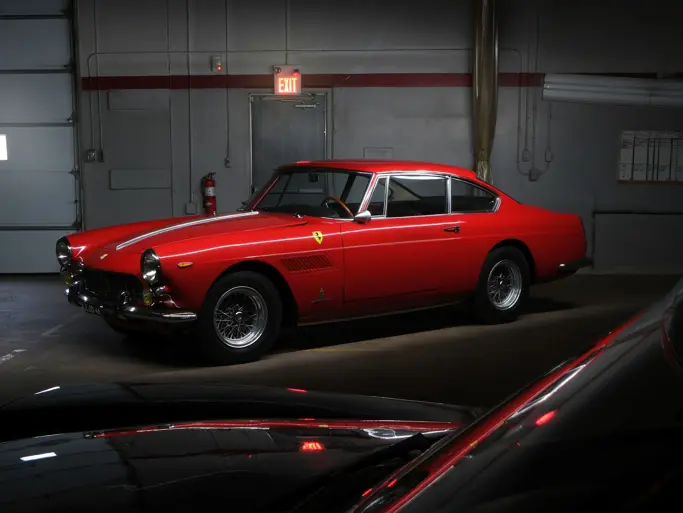
1967 Ferrari 275 GTB/4 by Scaglietti
{{lr.item.text}}
$3,657,500 USD | Sold
{{bidding.lot.reserveStatusFormatted}}
- Delivered new to famed film director John Frankenheimer
- Documented correspondence from Maranello Concessionaires
- History recorded by Ferrari historian Marcel Massini
- Recent cosmetic restoration by a marque specialist
- Submitted for Ferrari Classiche certification
- Includes books and tools
300 bhp 3,286 cc DOHC V-12 engine with six Weber carburetors, five-speed manual rear-mounted transaxle, four-wheel upper- and lower-wishbone coil-spring independent suspension, and four-wheel disc brakes. Wheelbase: 94.5 in.
At the Paris Motor Show in October 1966, Ferrari introduced an upgraded version of the 275 GTB that had debuted two years earlier. In most respects, the new car was nearly identical to its predecessor, as it also employed the long-nose body style that had been adopted later in the original 275’s production run, which prevented front lift at speed.
The major difference in the new car laid under the hood, where a revised version of Gioacchino Colombo’s short-block, 3.3-liter V-12 engine (now dubbed the Type 226) was fitted with dual overhead camshafts; this was the first appearance of such valve actuation in a production Ferrari road car. A slightly modified hood with a raised center section was added to the Scaglietti bodywork to accommodate the taller engine profile. The engine, also benefiting from dry-sump lubrication and the standard provision of six carburetors, developed 20 more horsepower than its predecessor, giving the nimble 275 chassis an added jolt of performance.
The new four-cam 275 Berlinetta was Maranello’s most dynamic road car yet, and it would forever be remembered as the last of the classic, vintage V-12 front-engine models, as the forthcoming 365 GTB would feature completely different aesthetics, marking a transition to 1970s styling. Only 330 examples of the 275 GTB/4 were produced before the model was discontinued in 1968, adding a degree of rarity to the revered Ferrari as well.
CHASSIS NUMBER 10451: THE FRANKENHEIMER FOUR-CAM
Chassis number 10451 claims impressive ownership provenance, having originally been purchased by John Frankenheimer, the famed Hollywood director who was responsible for such hits as The Manchurian Candidate, Grand Prix, and Ronin, among many others. A fascinating compendium of original correspondence between Mr. Frankenheimer and Col. R.J. Hoare, of England’s Maranello Concessionaires, copies of which are on file, summarizes the film director’s experience with the GTB.
According to the British distributor’s order sheet, number 325, Frankenheimer specified his 275 in left-hand drive and with alloy wheels and a steel body finished in Blu Sera paint. The interior was to be appointed with beige carpets and a grey headliner. On August 14, 1967, Ferrari mailed Frankenheimer to let him know that such a car could soon be made available, and ten days later, he contacted Maranello Concessionaires to authorize their execution of the transaction on his behalf.
The research of marque historian Marcel Massini clarifies that 10451’s chassis had been sent to Sergio Scaglietti’s carrozzerria in Modena on July 7, where it would receive its handsome GTB coachwork, which was completed on September 28. Just days earlier, the dual overhead-cam, 3.3-liter V-12 had been assembled under the supervision of well-known Ferrari engineer Amos Franchini. When completed, the Berlinetta was finished as-requested, in one of the most attractive original color combinations, Blue Sera over a beige leather interior, and equipped with a provision for a radio.
In his communication, Mr. Frankenheimer arranged to have one of his representatives take delivery of the car at the factory and then drive it to Budapest, Hungary, where he would soon be on location filming The Fixer. Many of his letters to Col. Hoare were, in fact, written on The Fixer stationary. On September 18, Col. Hoare submitted his official order to Ferrari’s Modena headquarters, and their SEFAC Bill of Sale to Frankenheimer is dated October 10. Two weeks later, Col. Hoare sent Mr. Frankenheimer a letter at his address at the Royal Hotel in Budapest, which acknowledged that delivery had taken place and described how pleased he was with the transaction.
Frankenheimer responded, “The car did indeed arrive and it is beautiful. It is without doubt the best Ferrari that I have ever owned. I will be taking it to Vienna this weekend for its 2,000-mile check-up.”
Unfortunately, the attention from Wolfgang Denzel (Ferrari’s authorized mechanic in Vienna) resulted in the carburetors being misadjusted, and Frankenheimer soon had trouble with improper fuel mixtures, a problem that was exacerbated by the unforgiving Hungarian winter. On one occasion, this led to the GTB stalling in the middle of a crowded street, leaving a multitude of curious townsfolk prodding at the exotic automobile in curiosity, much to the director’s utter dismay.
Frankenheimer quickly called upon Col. Hoare, who dispatched driver Michael Salmon to collect the car. The six-time Le Mans veteran piloted the Ferrari back across Europe, and in a letter he wrote to Frankenheimer in January, Salmon admitted the carburetors required much work. This was soon addressed by the factory, and the car was on to better running order, with Frankenheimer writing, “In spite of all the problems, I think the 275 GTB/4 is without a doubt the finest Ferrari I have ever owned.”
Upon completion of filming The Fixer, Mr. Frankenheimer tended to some business in London, where he had arranged for shipping of the Ferrari to America onboard famed Cunarder Queen Elizabeth. After being imported to the United States, the 275 remained in his care for a few years, until it was acquired in 1971 by Karl Fekete, of Inglewood, California, who retained possession until 1986. Malibu-based collector Paul Forbes purchased and owned the car for a brief period, and then the GTB/4 spent four years in Japan, under the care of two different owners, prior to being acquired in 1990 by well-known Hans Thulin for his Consolidator Collection in Sweden. After being offered for sale by Thulin in 1992, the Ferrari passed through the care of esteemed collector Chris Cox, who then sold it to vintage racing enthusiast Bruce Male, of Boston, Massachusetts. Mr. Male kept the superlative GTB for two decades, during which he repainted the exterior in Fly Giallo, as demonstrated by an appearance at the Rolex Vintage Festival at Lime Rock in September 2004.
In the last six months, this well-maintained GTB/4 was treated to a significant freshening, with Carl Steuer, of Blackhorse Motors in Los Angeles, California, performing a complete engine-out service and detail of the motor and transmission. The brakes and suspension were completely rebuilt, with a new master cylinder installed, and the engine compartment and undercarriage were properly refinished in the correct paint. The brightwork was re-chromed as needed, and all exterior trim was evaluated and replaced where necessary. The interior was substantially restored with all-new proper leather and carpeting from the well-regarded HVL in the Netherlands; though, the original leather was saved for future sample matches, for the owner who values comprehensive authenticity.
The sympathetic freshening was completed this year and has resulted in an impeccably presented GTB/4, one that features a deep finish on its Fly Giallo paint and correct detailing throughout the undercarriage and interior. Bolstered by the incredible provenance of primary ownership by the legendary John Frankenheimer, whose automotive interests nearly equaled his cinematic triumphs, this sensational Ferrari beacons for exhibition at finer concours d’elegance and FCA meets. Otherwise, the car may be equally enjoyed on the road, with the four-cam motor providing brisk performance and the type 596 chassis providing spirited handling.
More authentic 275 GTB/4 examples with such significant provenance rarely come to market, making 10451’s availability a mandatory consideration for any dedicated collector of vintage Maranello road cars.




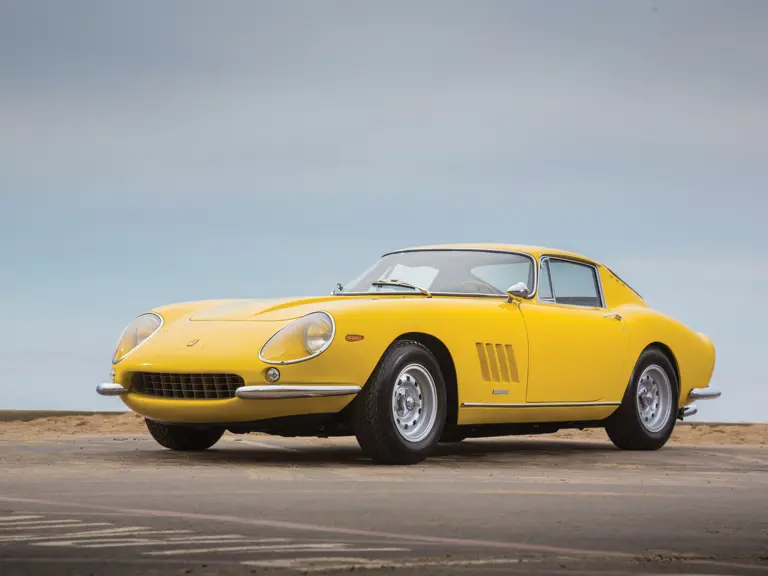

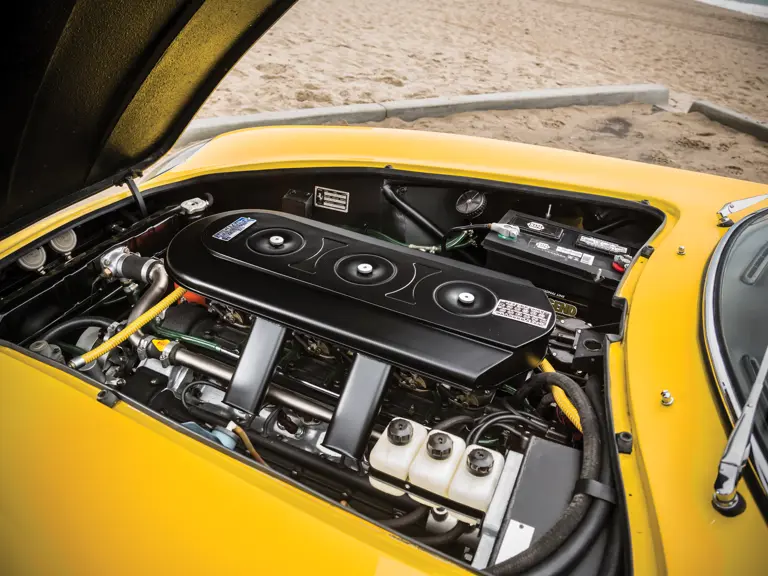
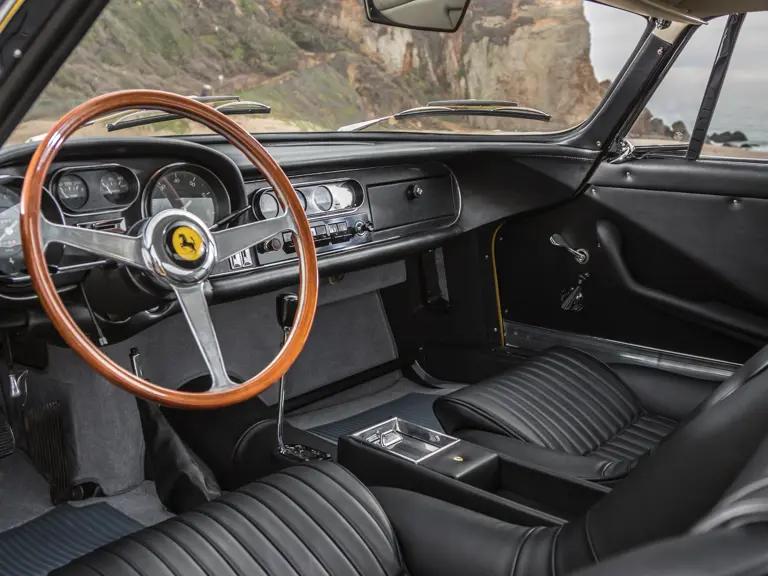
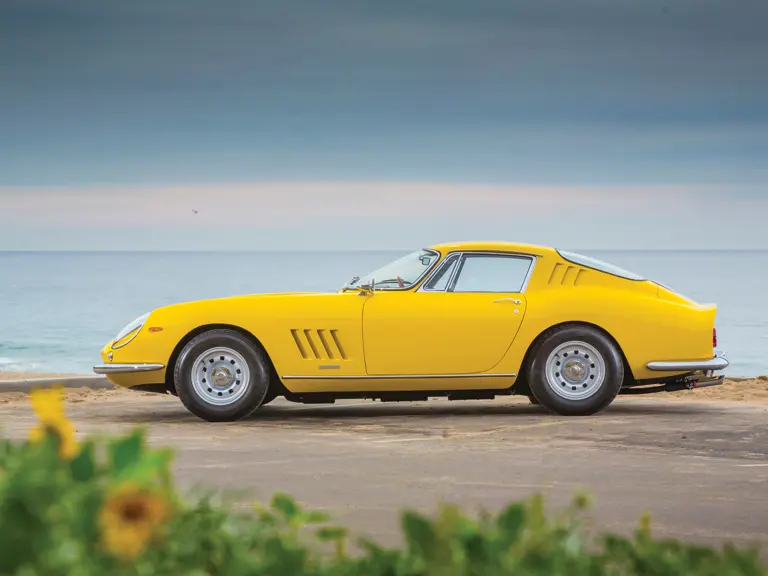
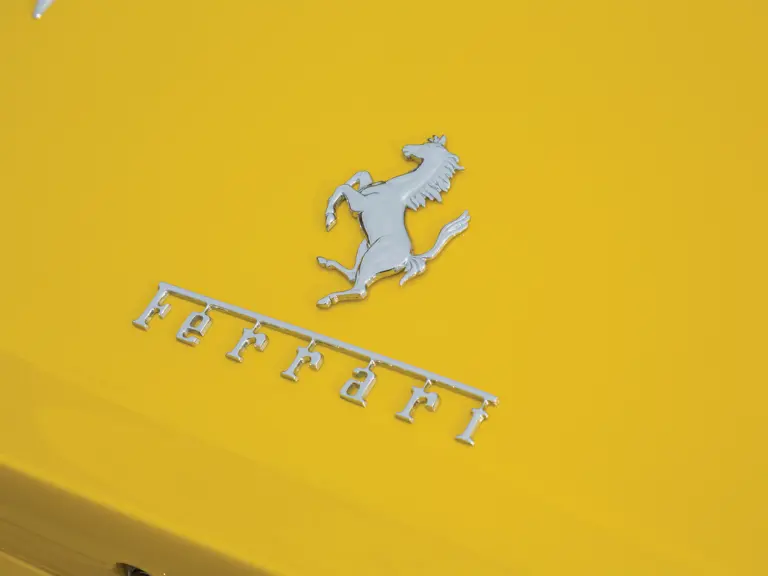



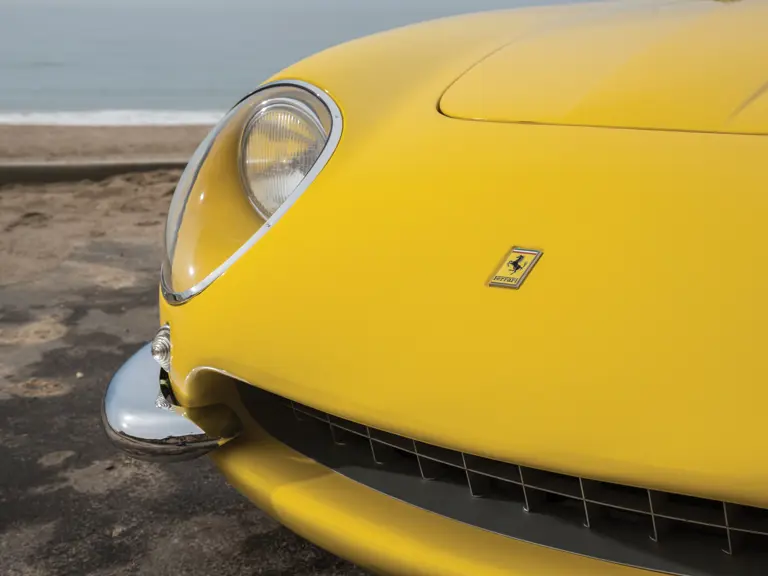
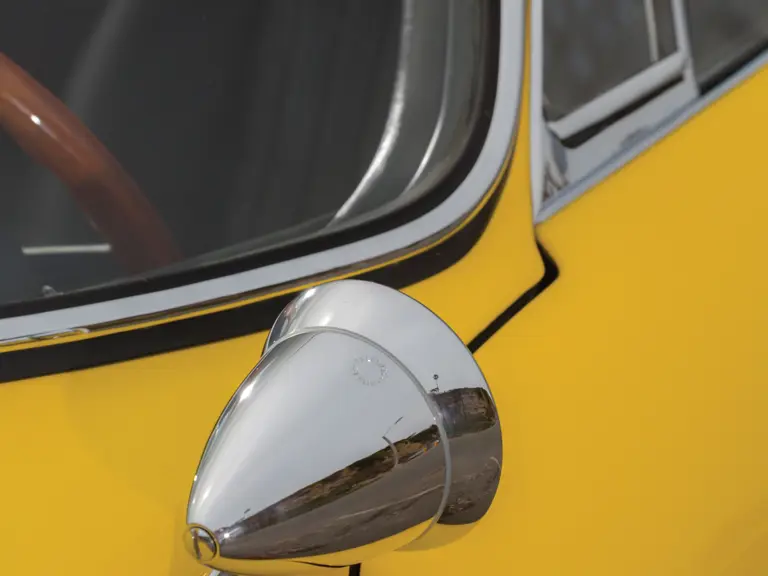
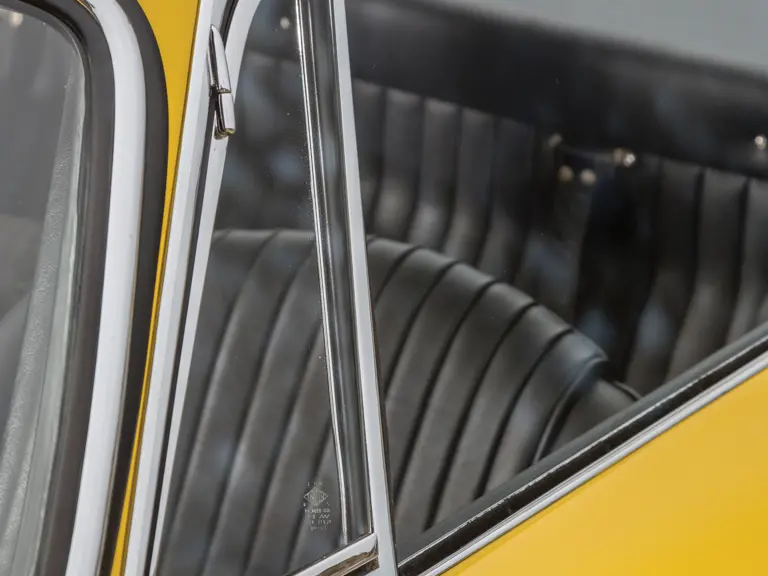
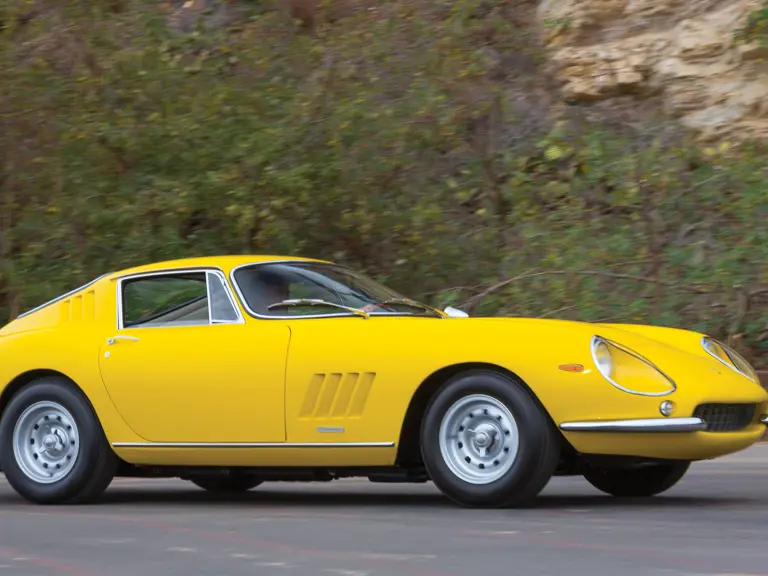



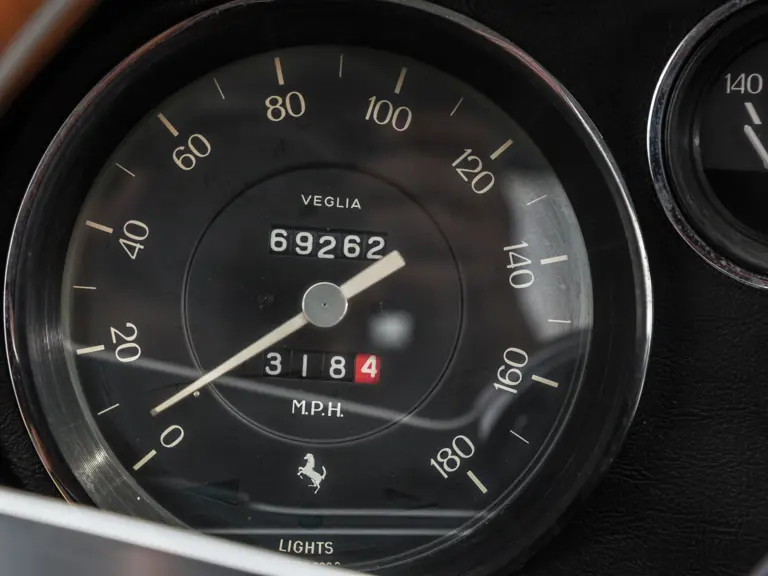
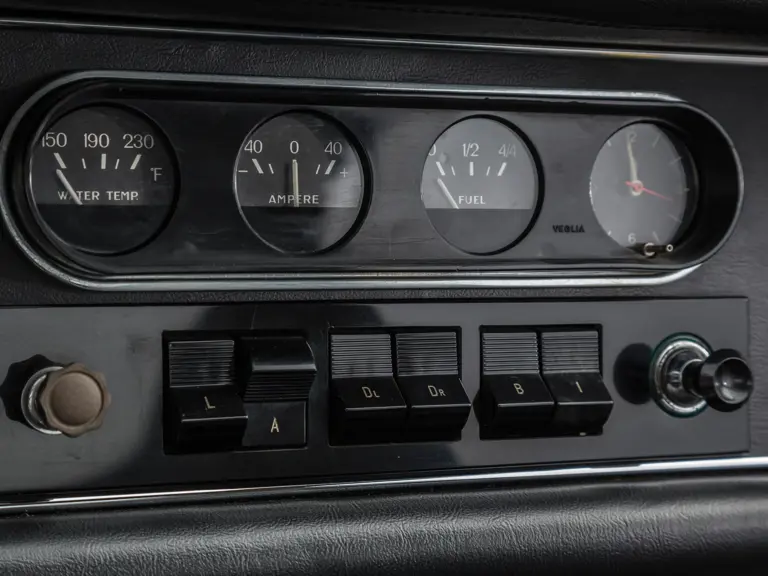


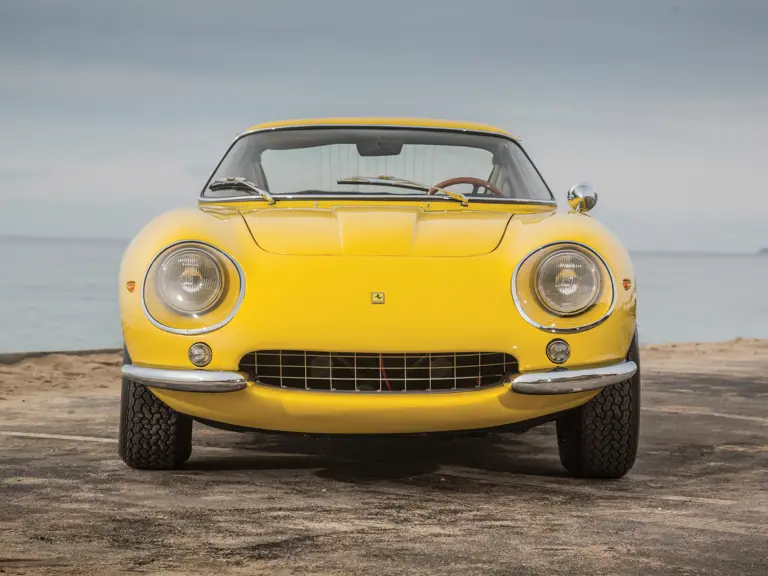
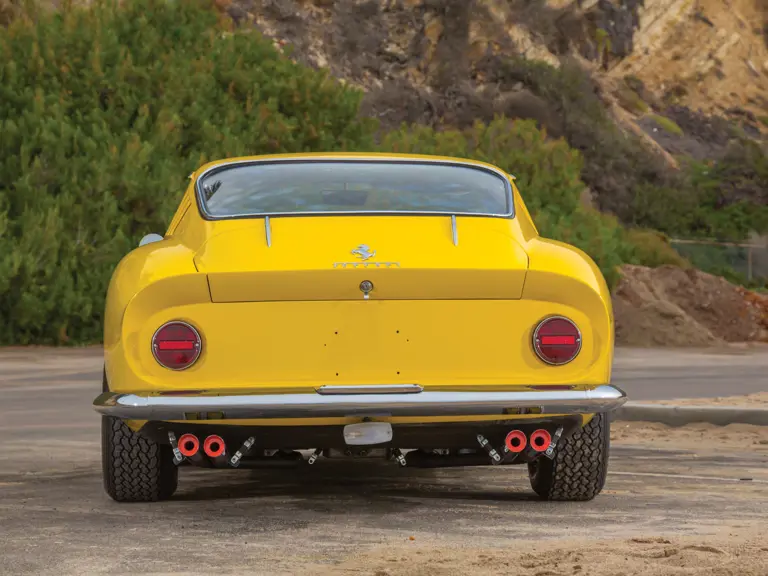

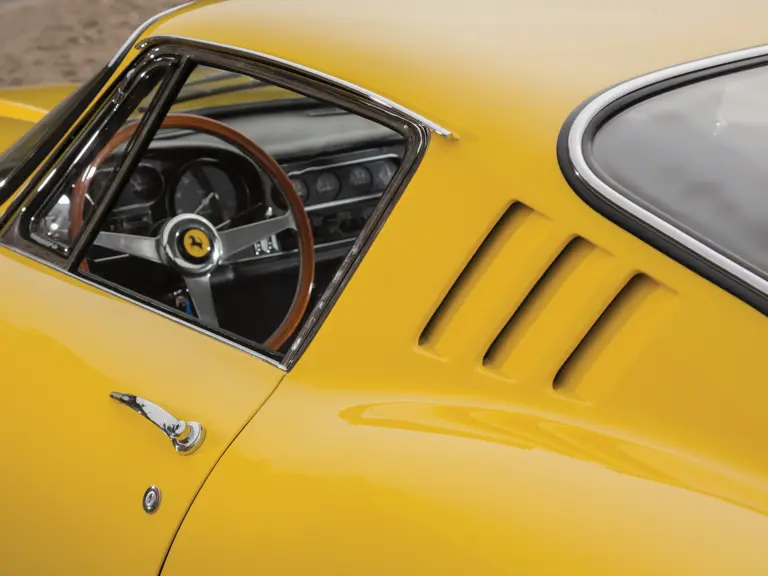
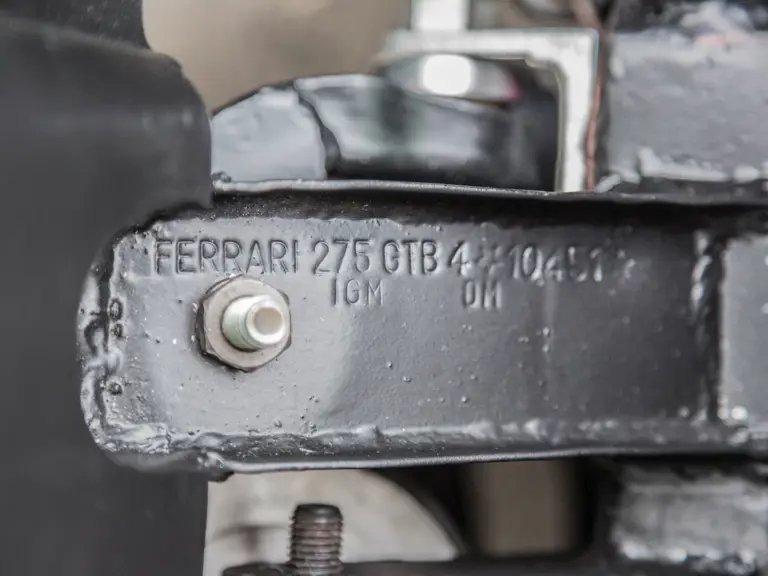
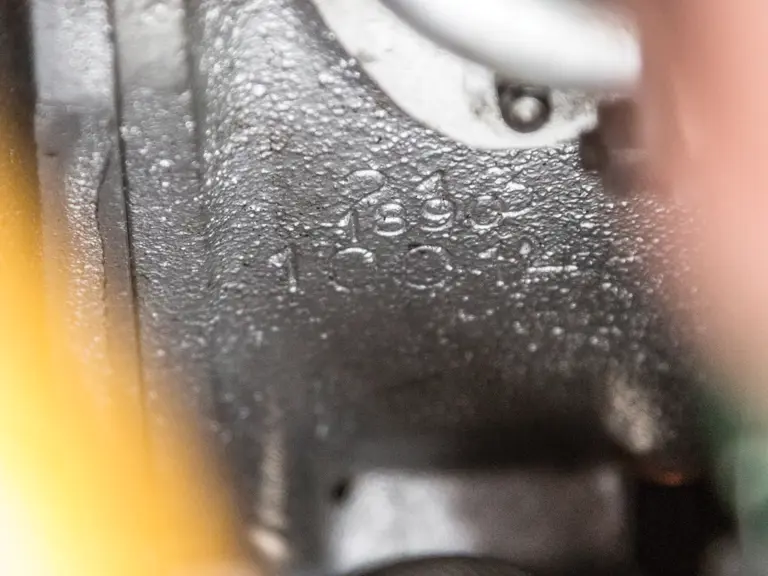


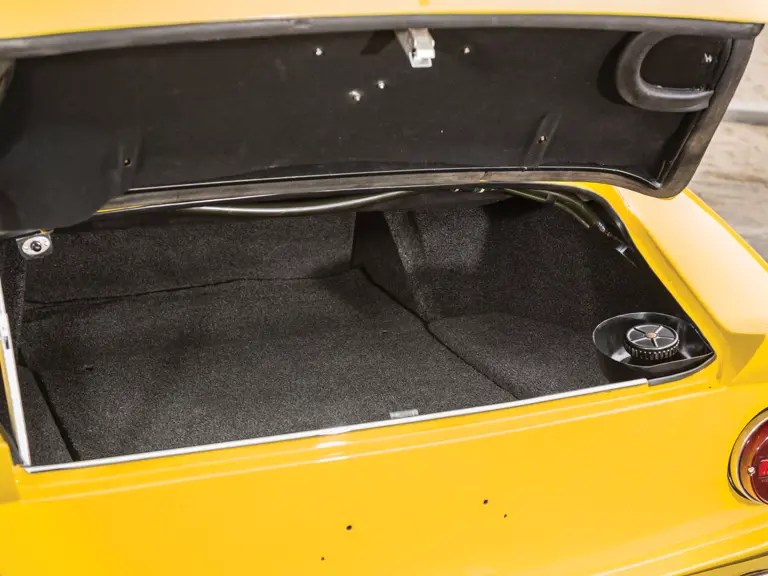
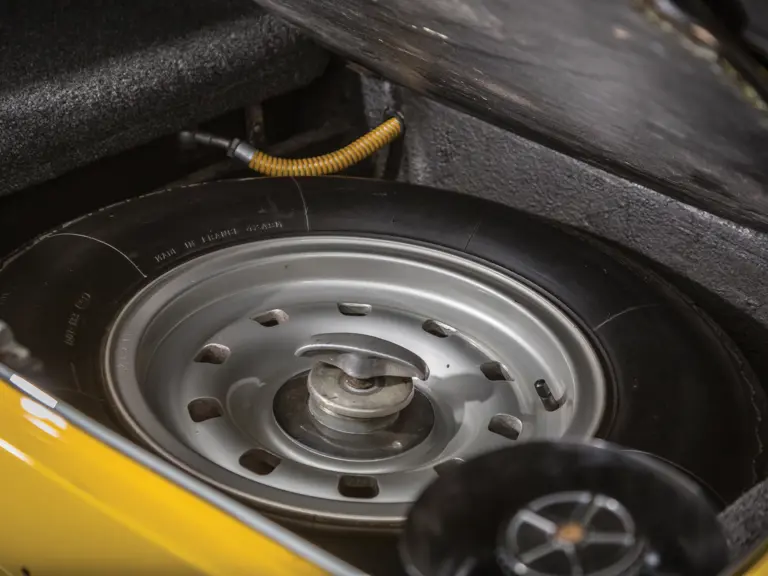
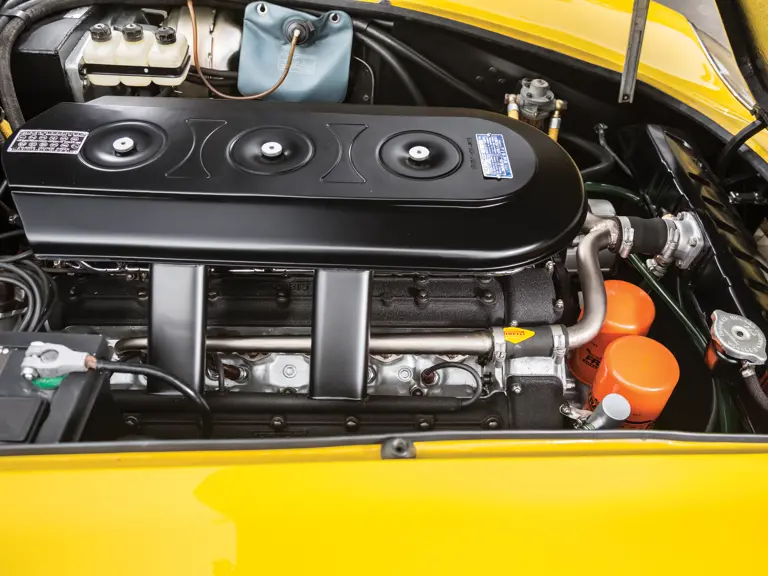
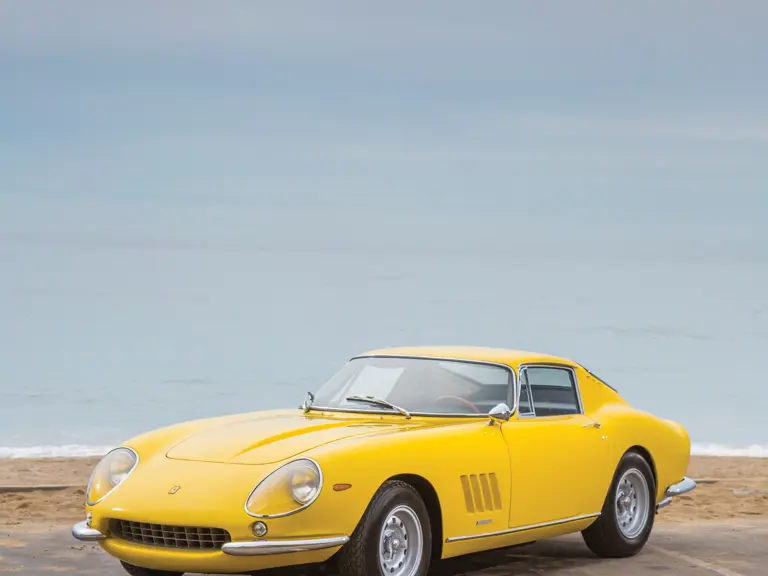
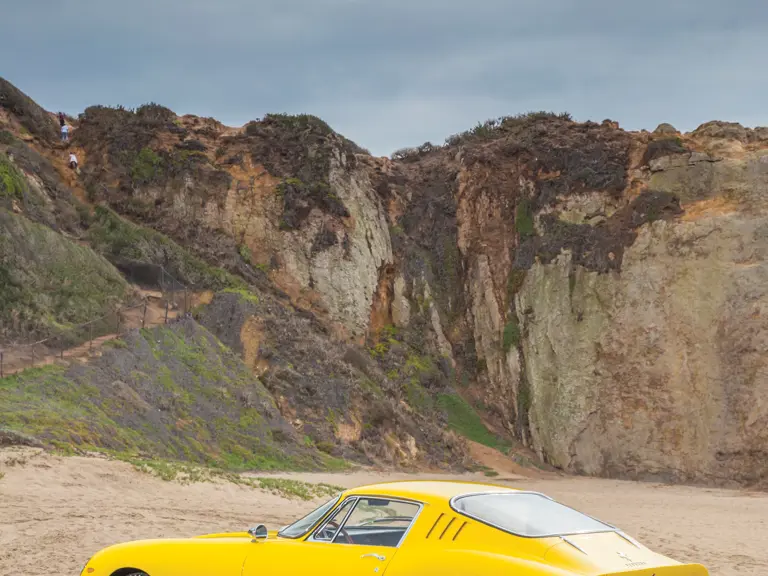
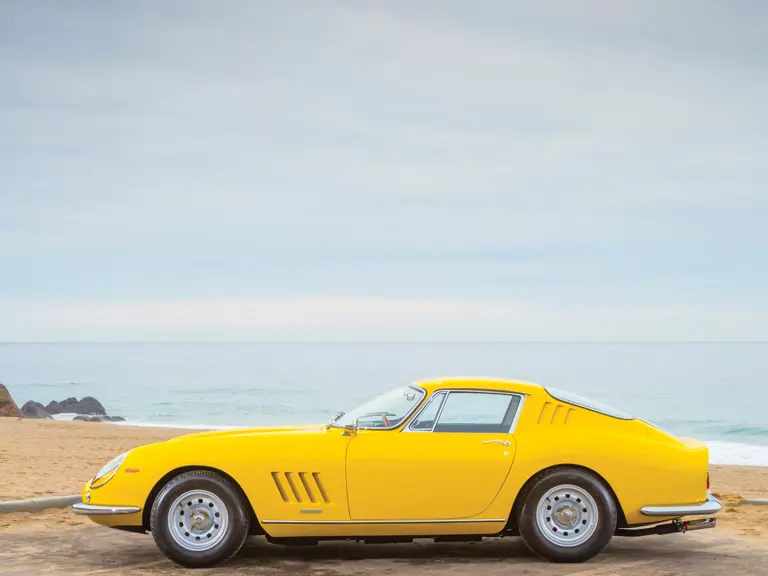

 | Phoenix, Arizona
| Phoenix, Arizona
